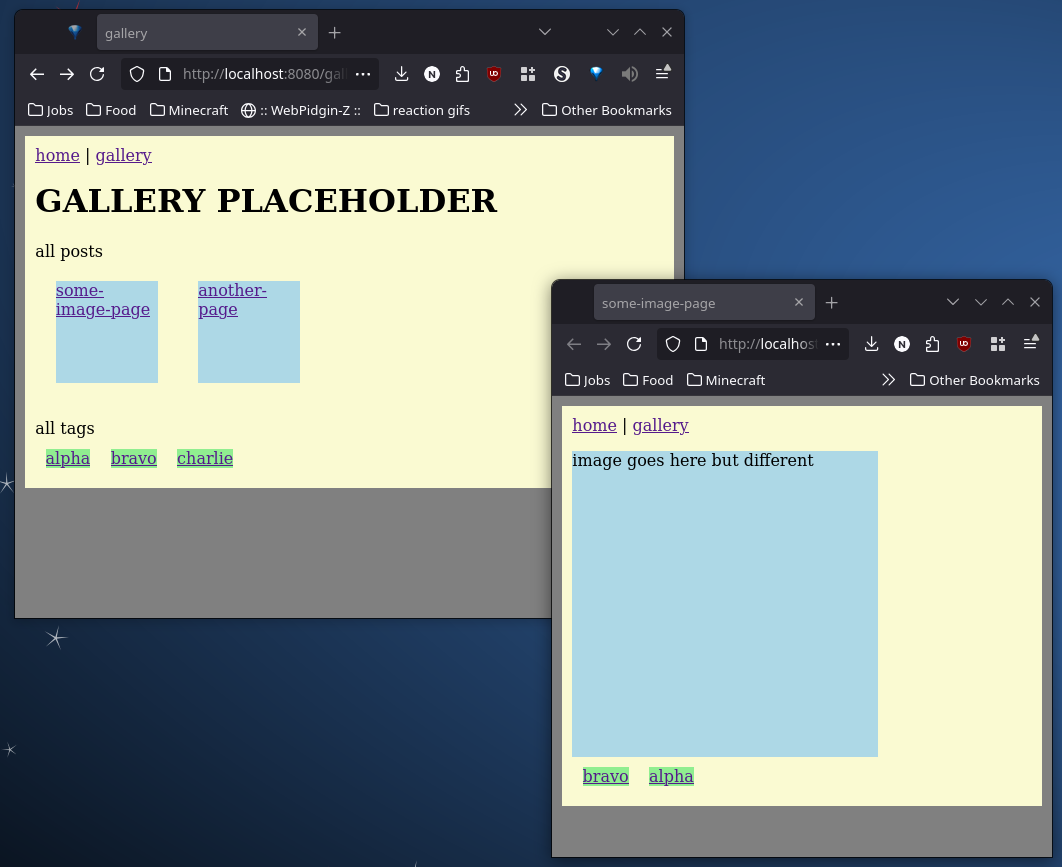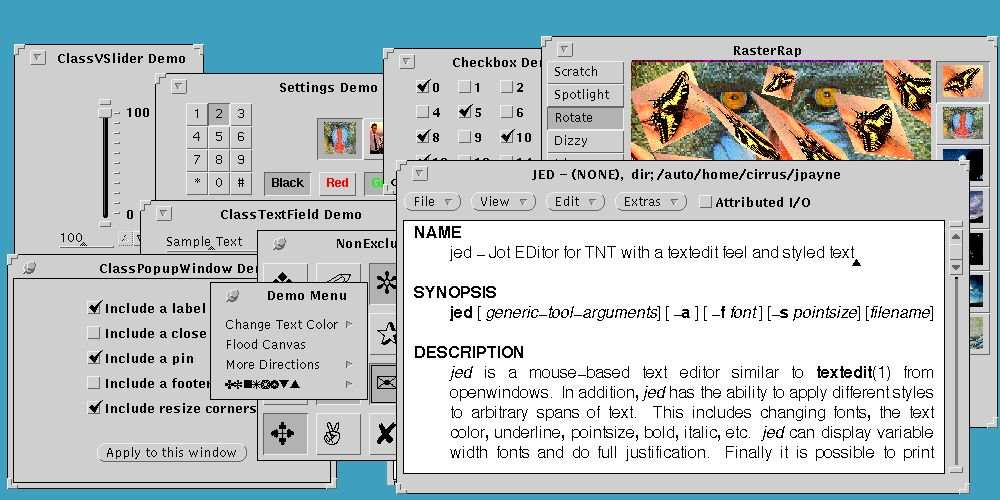It's that time of year again!
-
Advanced Programming in the Unix Environment
Week 5: The Unix Development Environment
This week, we cover the concept of the Unix userland as an Integrated Development Environment. This introduction outlines the different tools we will cover in subsequent videos, including the editor, the compiler chain, make(1), the debugger, and code revision and management tools. No vibe coding here.
Advanced Programming in the Unix Environment
Week 5: The Editor
In this video lecture, we look at the required feature for a full-fledged programmer's editor and illustrate some of the core functionality by example of vim(1). This includes basic motion commands, setting and moving to markers, using folds, and the use of the ':make' and quick fix lists to address compiler errors efficiently.
(Don't worry, we'll talk about ed(1) later.)
-
Advanced Programming in the Unix Environment
Week 5: The Editor
In this video lecture, we look at the required feature for a full-fledged programmer's editor and illustrate some of the core functionality by example of vim(1). This includes basic motion commands, setting and moving to markers, using folds, and the use of the ':make' and quick fix lists to address compiler errors efficiently.
(Don't worry, we'll talk about ed(1) later.)
Advanced Programming in the Unix Environment
Week 5: The Compiler Chain, Part I
In this video lecture, we begin our discussion of compilers as part of the Unix programming environment. We provide a high-level overview of how compilers process input source code and turn it into an executable.
-
Advanced Programming in the Unix Environment
Week 5: The Compiler Chain, Part I
In this video lecture, we begin our discussion of compilers as part of the Unix programming environment. We provide a high-level overview of how compilers process input source code and turn it into an executable.
Advanced Programming in the Unix Environment
Week 5: The Compiler Chain, Part II
In this video lecture, we look at the preprocessing stage of the compiler and observe how it invokes the cpp(1) command to include header files or replace macro definitions in place.
-
Advanced Programming in the Unix Environment
Week 5: The Compiler Chain, Part II
In this video lecture, we look at the preprocessing stage of the compiler and observe how it invokes the cpp(1) command to include header files or replace macro definitions in place.
Advanced Programming in the Unix Environment
Week 5: The Compiler Chain, Part III
In this next-to-last part on the compiler chain, we look at the compilation proper and the optimization and assembly of the intermediate code into an object file. (We will revisit some of this when we take a closer look at shared libraries in week 11.)
-
Advanced Programming in the Unix Environment
Week 5: The Compiler Chain, Part III
In this next-to-last part on the compiler chain, we look at the compilation proper and the optimization and assembly of the intermediate code into an object file. (We will revisit some of this when we take a closer look at shared libraries in week 11.)
Advanced Programming in the Unix Environment
Week 5: The Compiler Chain, Part IV
In this video lecture, we conclude our discussion of the compiler chain, analyzing the last step in the process: linking the object files into the executable. We identify aspects of the C Runtime libraries as well as the standard C library that we need to include and cover a few of the most important flags to ld(1).
-
Advanced Programming in the Unix Environment
Week 5: The Compiler Chain, Part IV
In this video lecture, we conclude our discussion of the compiler chain, analyzing the last step in the process: linking the object files into the executable. We identify aspects of the C Runtime libraries as well as the standard C library that we need to include and cover a few of the most important flags to ld(1).
Advanced Programming in the Unix Environment
Week 5: make(1)
Moving on from the compiler, we now look at how the make(1) utility can be used to help us selectively build our code project.
-
Advanced Programming in the Unix Environment
Week 5: make(1)
Moving on from the compiler, we now look at how the make(1) utility can be used to help us selectively build our code project.
Advanced Programming in the Unix Environment
Week 5: Debugging your code
Next in our discussion of the Unix _development_ environment, we start a short series on the use of a debugger by example of gdb(1). First, we illustrate just why exactly we might want to use a separate tool instead of sprinkling "printf" statements all over our code...
-
Advanced Programming in the Unix Environment
Week 5: Debugging your code
Next in our discussion of the Unix _development_ environment, we start a short series on the use of a debugger by example of gdb(1). First, we illustrate just why exactly we might want to use a separate tool instead of sprinkling "printf" statements all over our code...
Advanced Programming in the Unix Environment
Week 5: Using gdb(1)
Alright, let's look at gdb(1)! We begin by using it to troubleshoot our failing programs and immediately identify the location of our program where it segfaults. We also see how to inspect variables and call functions from within the debugger.
-
Advanced Programming in the Unix Environment
Week 5: Using gdb(1)
Alright, let's look at gdb(1)! We begin by using it to troubleshoot our failing programs and immediately identify the location of our program where it segfaults. We also see how to inspect variables and call functions from within the debugger.
Advanced Programming in the Unix Environment
Week 5: Using gdb(1), part II
In this video lecture, we continue to explore the capabilities of the debugger. We show how you can set a breakpoint to pause the program and how to step through the program while watching our code.
-
Advanced Programming in the Unix Environment
Week 5: Using gdb(1), part II
In this video lecture, we continue to explore the capabilities of the debugger. We show how you can set a breakpoint to pause the program and how to step through the program while watching our code.
Advanced Programming in the Unix Environment
Week 5: Using gdb(1), part III
In this video lecture, we'll use our newly learned debugging skills to analyze and fix yet another flawed program. In the process, we learn to debug code from multiple source files and find out how to change the value of variables while the program is running.
-
Advanced Programming in the Unix Environment
Week 5: Using gdb(1), part III
In this video lecture, we'll use our newly learned debugging skills to analyze and fix yet another flawed program. In the process, we learn to debug code from multiple source files and find out how to change the value of variables while the program is running.
Advanced Programming in the Unix Environment
Week 5: Using gdb(1), part IV
In our last segment on gdb(1), we use the debugger to examine memory locations in a running program and illustrate how pointers and arrays work in the C programming language.
-
Advanced Programming in the Unix Environment
Week 5: Using gdb(1), part IV
In our last segment on gdb(1), we use the debugger to examine memory locations in a running program and illustrate how pointers and arrays work in the C programming language.
Advanced Programming in the Unix Environment
Tool Tip: ed(1) is the standard text editor
As part of our discussion of unix development tools, we take a short detour to provide a quick walkthrough of ed(1), the standard text editor. This is not done merely to up your geek creds, but understanding ed(1) will also helps us better understand other tools like vi(1), sed(1), and ultimately even things like diff(1) and patch(1) better.
-
 undefined stefano@mastodon.bsd.cafe shared this topic on
undefined stefano@mastodon.bsd.cafe shared this topic on


